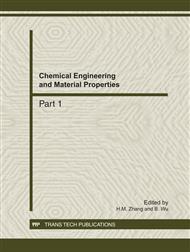p.81
p.86
p.90
p.95
p.100
p.107
p.111
p.116
p.121
A Simulation Analysis Method for Crack Resistance of Hydraulic Concrete Based on Temperature-Stress Test
Abstract:
The temperature-stress testing machine can be adopted to evaluate the crack resistance of concrete, but because of the disadvantages of long time, costs much restrict the development of temperature-stress test method. Getting needed mechanical and thermal parameters by the test here, then be used in the temperature history calculated by simulation software to compare crack resistance of different concretes. By using the convenient method, we can compare crack resistance of different concretes under the actual condition through simulation. The results showed that: the B4Cast simulation software can be used to get different concrete internal temperature histories under different temperature control methods, using the temperature history close to the real condition can evaluate the crack resistance of concrete objectively; on the basis of the temperature-stress test results, via fitting obtained the rules of concrete coefficient of thermal expansion, contraction deformation, elastic modulus, tensile strength and other parameters with maturation changes, then be used in the temperature history calculated by B4Cast, the concrete cracking risk can be simulation analyzed; using this method to compare the same strength grade of normal and pump concrete, the result showed that crack resistance of normal concrete is better.
Info:
Periodical:
Pages:
100-106
Citation:
Online since:
December 2011
Authors:
Price:
Сopyright:
© 2012 Trans Tech Publications Ltd. All Rights Reserved
Share:
Citation:


